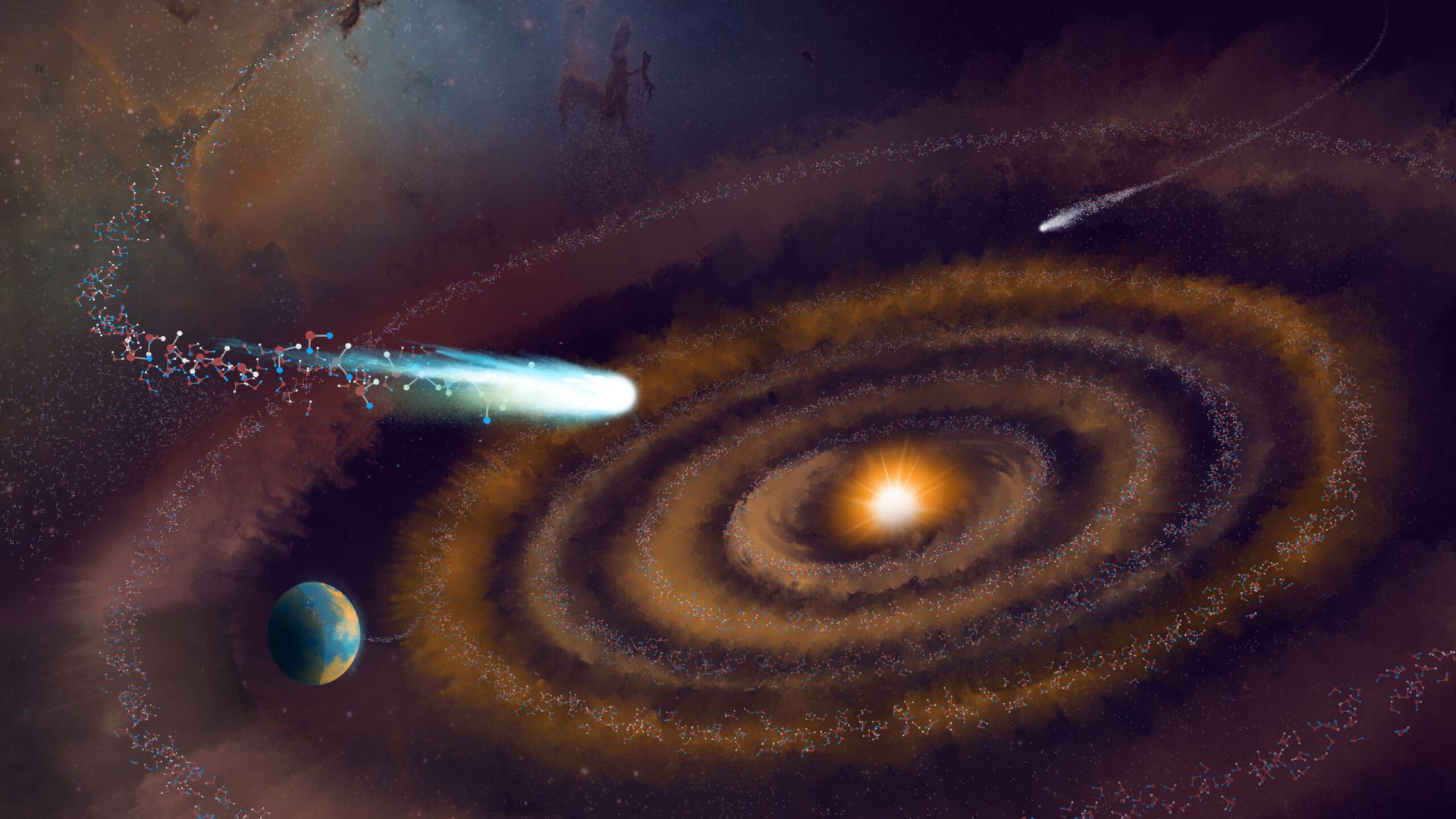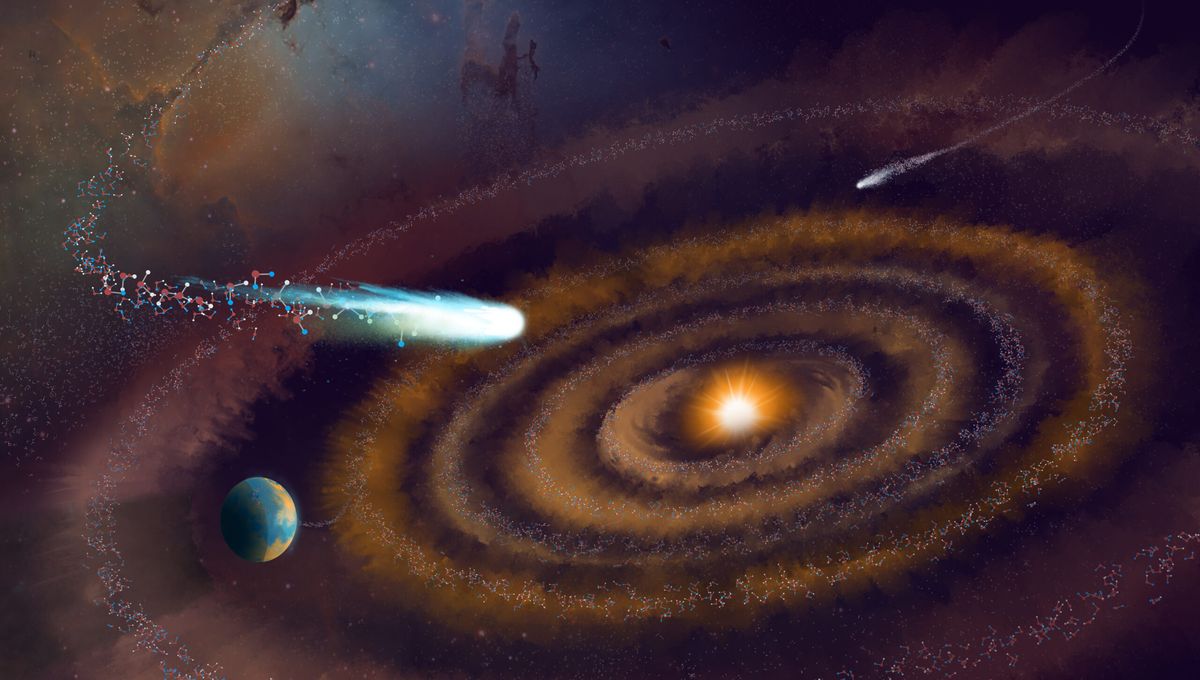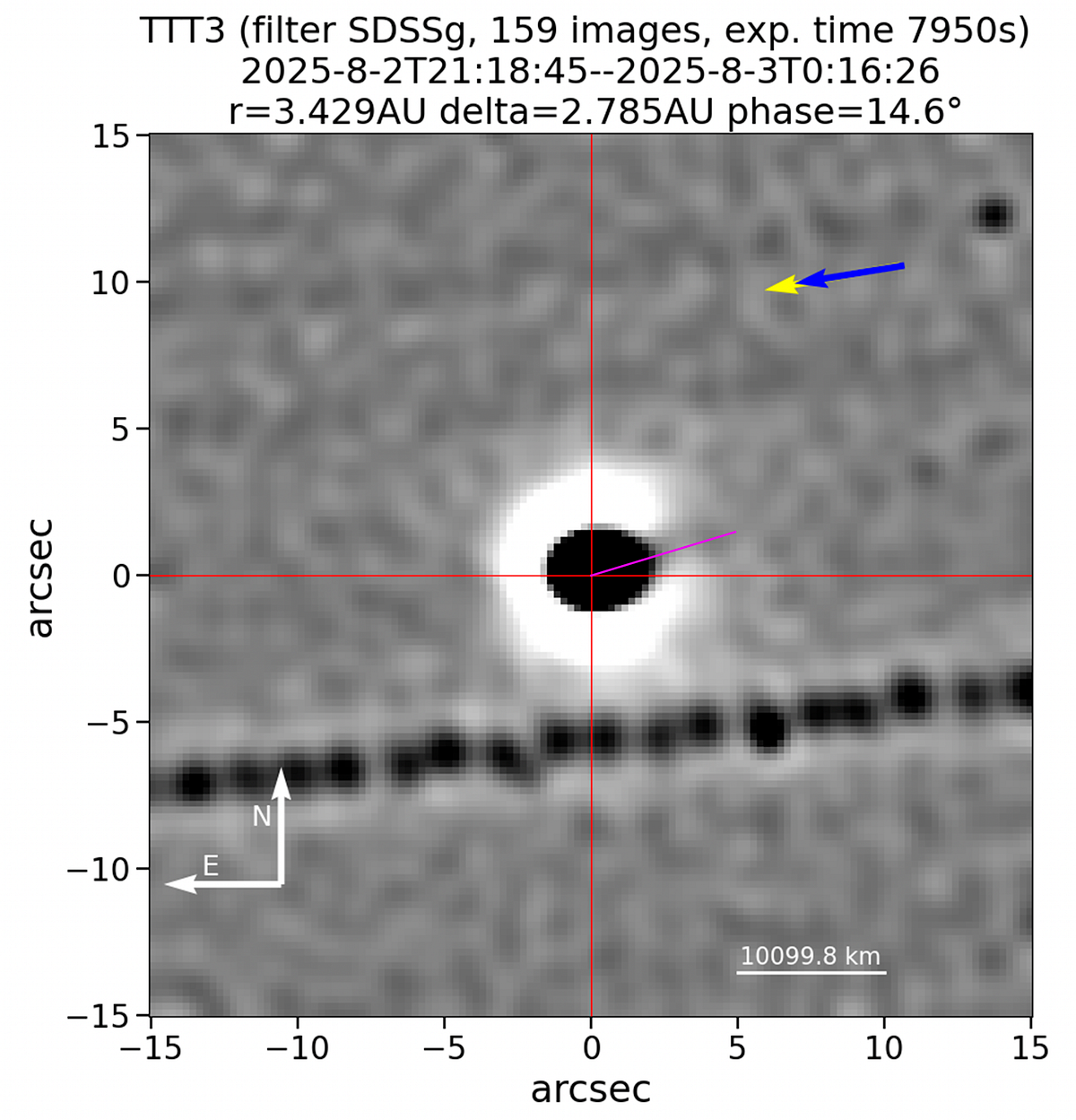3I/ATLAS, our third discovered interstellar visitor, has been in the news a lot lately for a whole host of reasons, and rightly so given the amount of unique scientific data different groups and telescopes have been collecting off of it. A new pre-release paper from researchers at the Auburn University Department of Physics recounts yet another interesting aspect of the new visitor – its water content.
Almost all comets have some amount of water in them, as water is one of the most common substances in the universe, despite its absence on many of the worlds of our solar system. Typically, comets have a “coma” of water particles trailing behind them as they approach the Sun. Doing so heats up the particles, sublimating them into water vapor, which then streams behind the comet, giving it its iconic “tail”.
But 3I/ATLAS is acting differently from other comets, to say the least. It was around 6 AU at its discovery, but has been making its way closer to the Sun on its one-way journey, which will eventually peak at around 1.3 AU in October. The Auburn astronomers observed it at the end of July, about a month after it was first discovered, and when it was 3.5 AU away from the Sun.
Fraser discusses the newest interstellar object – 3I/ATLAS
They did so using the Ultraviolet / Optical Telescope (UVOT) on the Neil Gehrels-Swift Observatory, which is in orbit above Earth and therefore easier to detect faint photometric lines from things like water. Typically, astronomers wouldn’t expect to find OH (hydroxyl) emissions, which they use as a proxy for water, as far out as 3.5 AU, since the water ice sublimation process isn’t very effective at that distance.
To their surprise, not only did they see a strong OH signal, they also didn’t see any signal of the cyanogen radical (CN), which is almost always one of the first signals found on a comet. That is due to its low sublimation point (around -13 C) and emission band in at a wavelength that easily passes through our atmosphere. However, its lack of detection in this round of observations could mean that the composition of 3I/ATLAS is dramatically different from other comets in our solar system.
Another useful statistic to come out of the water observations is an estimate of the “active surface area” of the comet – essentially an estimate of how much of the comet’s area is actively producing water. The authors calculated approximately 19 km2 of active surface on 3I/ATLAS. Given that the upper limit of the diameter of the comet is 2.8 km, that means that around 20% of the surface area of the comet is actively producing water vapor. That is 4 times higher than the typical 3-5% of solar system’s cometary population, and might be explained by the fact that this is likely the first time 3I/ATLAS is actually visiting a star itself, so it has more water to expel.
Fraser discusses the possibility of catching up to an interstellar object.
That amount of water is key to the next observational step suggested by the authors. They developed two hypotheses, which can each be confirmed as the comet reaches perihelion. If the water production peaks near perihelion, and only trace amounts of “high-metallicity” volatiles like carbon monoxide and cyanogen, that would indicate that 3I/ATLAS is from a “low-metallicity” system (i.e. one where there is only a large amount of hydrogen, and not many other elements). On the other hand, if the water production rate drops off significantly after perihelion, and is replaced by a significantly increased volatile production rate, this would indicate that it actually came from a high-metallicity system, and it would have more in common with the last interstellar visitor – 2I/Borisov.
Given the attention from both scientists and the wider public this comet has drawn, it will undoubtedly be observed as closely as possible over the coming months while it is still visible. With even more new hypotheses to test, 3I/ATLAS will help broaden our understanding of its origins as it begins to melt more. The world will be watching as it does.
Learn More:
Z. Xing et al – Water Detection in the Interstellar Object 3I/ATLAS
UT – Gemini North Sees Brightening Interstellar Comet 3I/ATLAS in Detail
UT – Newly-Discovered Interstellar Comet is Billions of Years Older Than the Solar System
UT – Hubble Captures Stunning View of Third Interstellar Visitor
Source link


